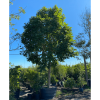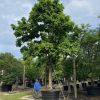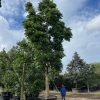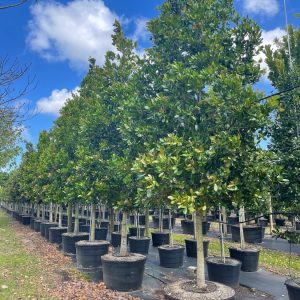Description
Cabbage bark tree description
Andira Inermis (Cabbage Bark) is a tropical American timber tree. It grows to about 100 feet (30.48 m) tall and has a straight trunk with or without buttresses. The dark gray to brown scaly outer bark has fissures. In addition, the inner bark is a pinkish brown. Importantly, the bark has an unpleasant cabbage-like odor. The spreading dense crown is columnar or pyramidal. The young twigs in the crown are brown and downy. While the young bright tan leaves turn to shiny green when mature. Additionally, the leaves are alternate, pinnate, entire, and measure 6 to 20 inches (50.8 cm) long.
Cabbage bark flowers are borne in terminal groups. The flowers are 7 to 24 inches (60.96 cm) long, and made up of small pink to purple, aromatic blooms. Its flowers attract bees, butterflies, and birds. The Cabbage Bark tree has hard, leathery fruit in an oval capsule, 3/4 to 1 1/2 inches long, containing a fleshy pulp and a single seed. Bats and rodents feed on the fruit and disperse the seeds.
Andira Inermis tree cultivation
For propagation purposes, sow the seeds into the soil. Please note that bark and seeds are reported to be poisonous. Yet, they have medicinal uses. Andira Inermis (Cabbage Bark) timber is strong, hard, and heavy. Its uses include parquet flooring and cabinetry.
In its native area, Cabbage bark tree serves for erosion control, windbreaks, and as shade in coffee plantations. Andira Inermis is also an ornamental tree, well suited to parks, yards, and street sides thanks to its foliage and flowers.

















